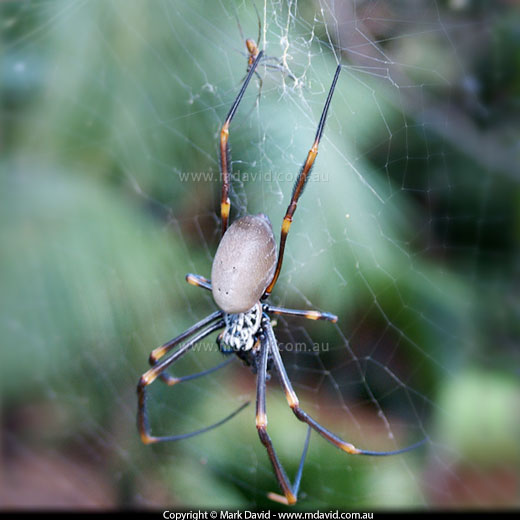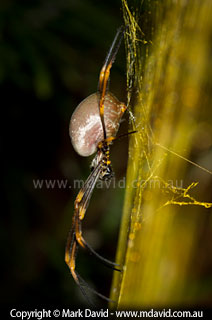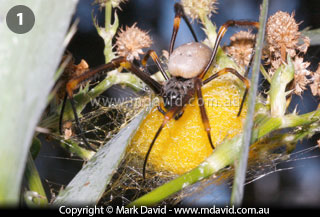
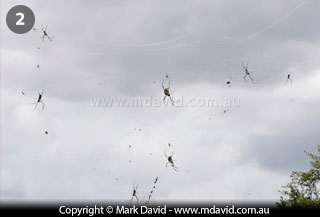
1: A female Nephila plumipes with her egg sac. The egg secs do a great
job at showing of the golden colour of the silk. 2: Nephila plumipes will often form clusters of webs with others of the
same species.
With some types of spiders there’s a difference in size between the males and
females. Nephila plumipes has taken this idea almost to the point of a joke. The picture
at the top of this page shows you what I mean. That big thing filling the picture is the
female. The male is at the top of the photo and he’s so small you’d almost
think those two spiders were from different species.
Often around the end of summer or autumn, these spiders will often form themselves and
their webs into large clusters, usually high up but sometimes at our face-level. If you do
walk into one of their webs you’ll be pleased to know that these are not considered to
be dangerous to people.
A mature female Golden Orb Weaver is a big spider. These spiders also have very strong
silk. They hang around in the centres of their webs and you’ll often see the dried-up
husks of prey hanging in neat rows like a bunch of trophies. As you’d expect from a Golden Orb Weaver, their egg sacs
are a beautiful golden yellow.
Other Golden Orb Weavers
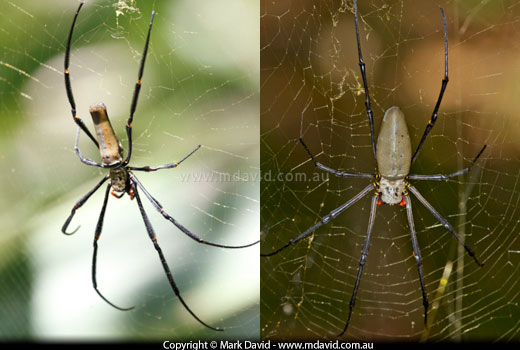
There are other spiders in this group of Nephila spiders and it’s pretty safe to
call them Golden Orb Weavers.
In northern Australia some of them can get very big, often reaching the size of an
adult person’s hand. Which reminds me of a friend of mine who was working as a drover
in Queensland. He accidentally rode his horse through one of their webs and one of those
hand-sized spiders fell down the front of his shirt. He assures me he managed a very
fast dismount. I will stress that he wasn’t in any danger, but you still can’t
blame the guy for wanting to part ways with his new passenger.
Living throughout the tropical north of Australia, these handsome spiders
make very big — and strong — orb webs. Their web is so strong that some
indigenous people have found some clever uses for them. For example, they might swing a
stick through their webs, tangling up the spiders and their webs, and use those spidery
tangles to lure and trap fish.
These spiders eat insects that get caught in the web, but they have a reputation for
eating birds too. With a web so big (over a metre across) and strong it’s not
surprising that it could happen. These spiders have been seen feeding on the birds, but I
stress that birds are not their usual diet.
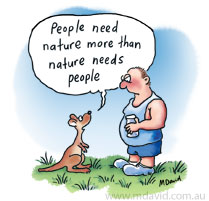

Birds

Insects and spiders

Other stuff

